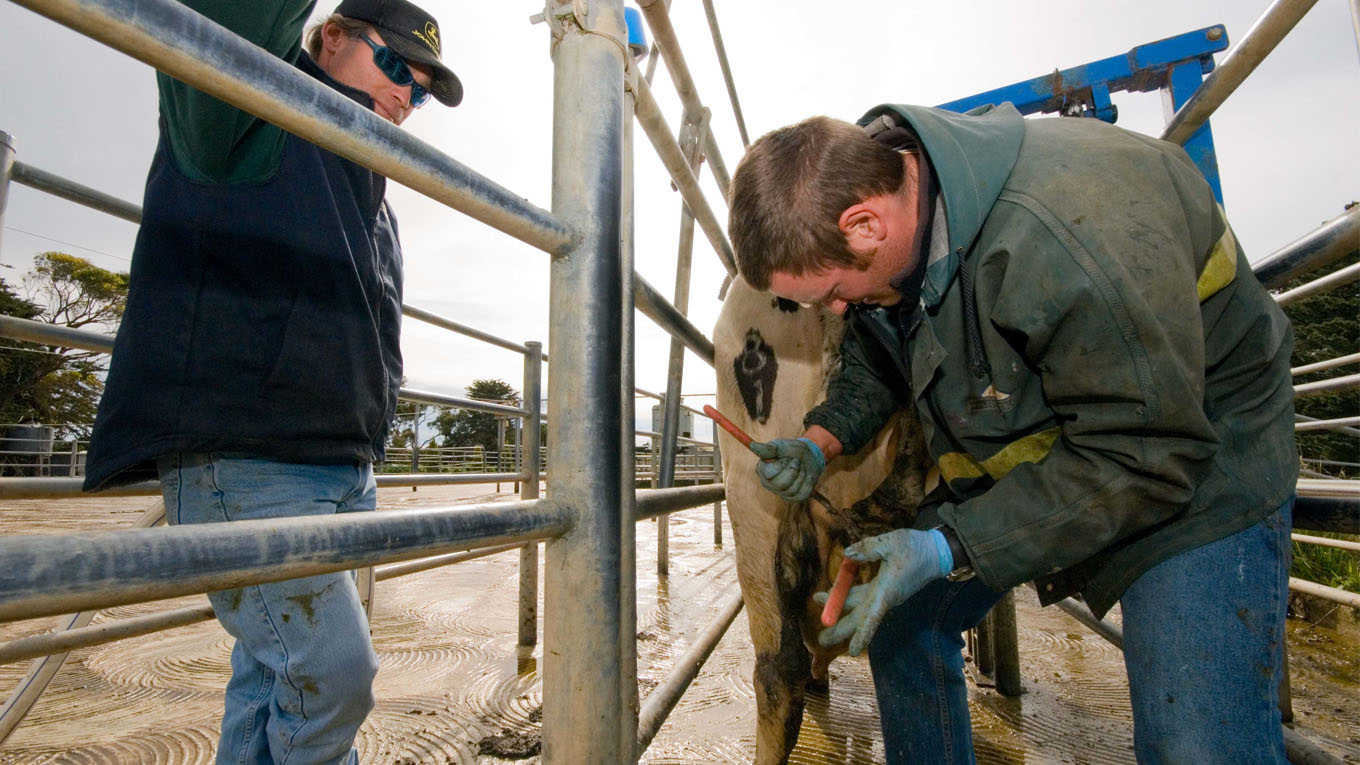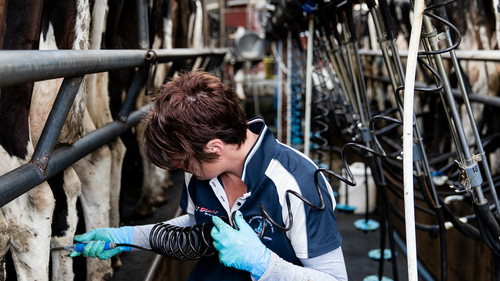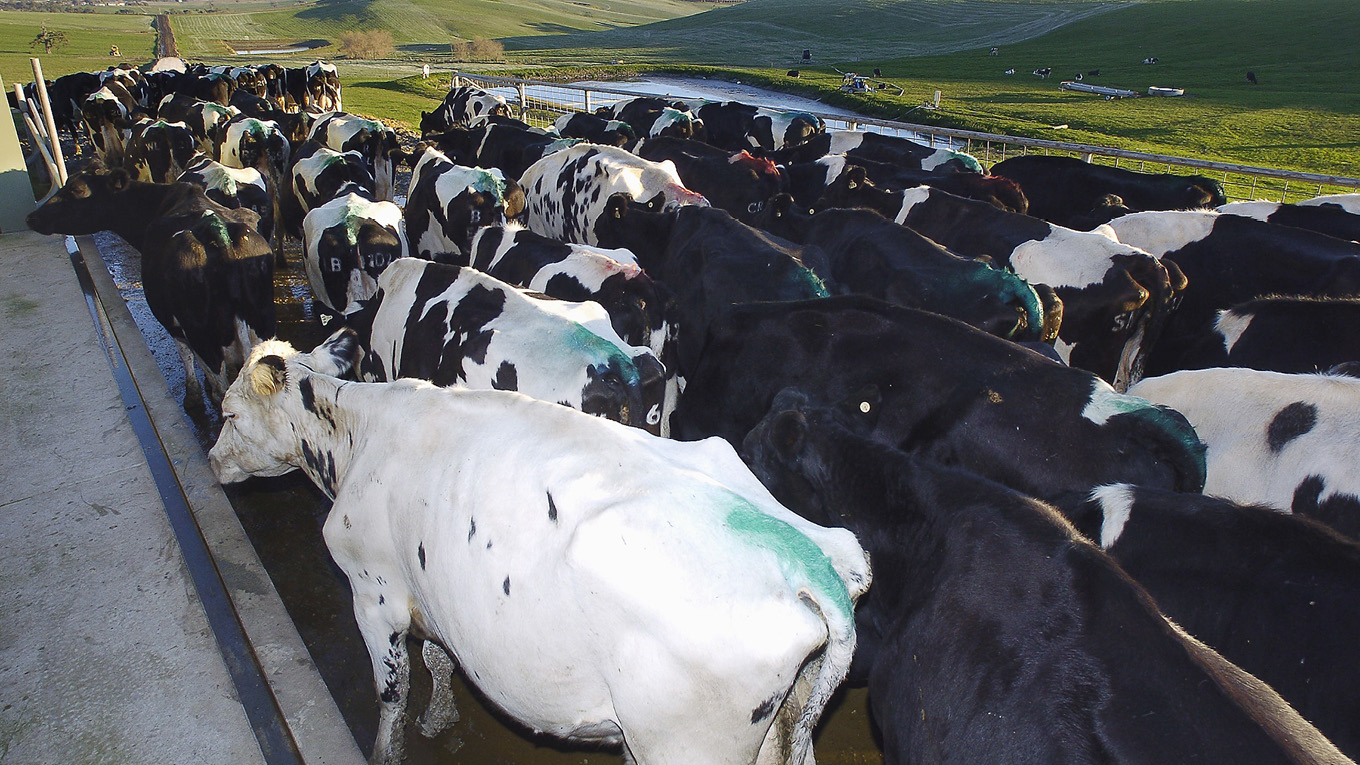Making Silage
When pasture is ensiled, its sugars are converted into lactic acid by bacteria. This lactic acid pickles the pasture and helps preserve it for much longer than if it had left out in the open.
It is impossible to produce high-quality silage from low-quality pasture, no matter how good the fermentation is. The quality of the ensiled pasture and the quality of fermentation are equally important.
Harvesting forages at a leafier, less mature stage may result in slightly lower yields but will always mean that the resultant conserved forage will be of higher quality and give a greater milk yield response when fed to cows. Therefore, successful silage making is often a trade-off between yield and quality.
Five key steps
Making and feeding high quality pasture silage with lower fibre levels encourages higher feed intakes and better cow performance.
There are five key steps in making quality silage:
- Cutting early in the season
- Quickly wilting and harvesting
- Compacting stacks and making bales as compact as possible
- Sealing airtight as soon as possible
- Repairing holes immediately
In this video, nutrition consultant David Lewis and New South Wales dairy farmer Lachlan Marshall run through their quick tips for better quality silage.
Dairy Australia's Quality Pasture Silage – Five easy steps booklet expands on these steps more. The booklet can be downloaded below or is available in hard copy from any of Dairy Australia's regional teams. This booklet complements the Ryegrass – spring grazing management paddock guide.
The below fact sheet offers guidance on how to manage paddocks when silage has been compromised due to excessive wet conditions.
-
Silage and Paddock Management in Wet Weather
PDF, 221.1 KB
TopFodder: Successful Silage manual
The TopFodder Successful Silage manual has detailed information on the basic principles and practicalities of producing silage in Australia, from growing and harvesting the parent forage to storing and feeding the silage to dairy cows.
TopFodder is also available as a two-day workshop. For further information, contact your local regional team.
Click on the relevant chapter below to view contents of the manual in PDF format.
-
successful silage contents and introduction
PDF, 6.69 MB -
successful silage 01 silage in the farming system
PDF, 884.64 KB -
successful silage 02 principles of silage preservation
PDF, 932.67 KB -
successful silage 03 silage as pasture management tool
PDF, 280.49 KB -
successful silage 04 silage from pastures and forage crop
PDF, 575.31 KB -
successful silage 05 crops and byproducts for silage
PDF, 459.35 KB -
successful silage 06 mowing and wilting pastures and crops
PDF, 460.71 KB -
successful silage 07 silage additives
PDF, 335.07 KB -
successful silage 08 harvesting silage
PDF, 344.24 KB -
successful silage 09 silage storage
PDF, 584.35 KB -
successful silage 10 feeding silage
PDF, 430.1 KB -
successful silage 11 assessing theeconomics of silage production
PDF, 426.44 KB -
successful silage 12 feed testing assessing silage quality
PDF, 347.58 KB -
successful silage 13 feeding silage to dairy cows
PDF, 318.01 KB
TopFodder Silage Notes
A range of information has been produced as part of TopFodder, a joint initiative of Dairy Australia and NSW Department of Primary Industries which aims to improve the quality of silage produced on Australian farms. This information is available in a series of Silage Notes as follows:
Selecting pastures and crops for silage production
Silage can be produced either from crops grown specifically to harvest as silage, or from pastures or forage crops when there is a genuine surplus of forage that cannot be grazed.
For more information, refer to the Selecting pastures and crops for silage production Silage Note.
Factors affecting the quality and quantity of forage harvested for silage
Forage quality and quantity are both important in determining the profitability of animal production from silage.
For more information, refer to the Factors affecting the quality and quantity of forage harvested for silage Silage Note.
Storage options for chopped silage
There is a wide range of storage options suitable for chopped silage. These range from relatively inexpensive buns or stacks to concrete bunkers requiring high capital investment.
For more information, refer to the Storage options for chopped silage Silage Note.
-
quality pasture silage five easy steps booklet
PDF, 538.39 KB -
Ryegrass spring grazing management paddock guide 2016
PDF, 1.41 MB -
successful silage contents and introduction
PDF, 6.69 MB -
Top Fodder Silage Note 10
PDF, 488.71 KB -
Top Fodder Silage Note 5
PDF, 152.85 KB -
Top Fodder Silage Note 4
PDF, 91.03 KB


